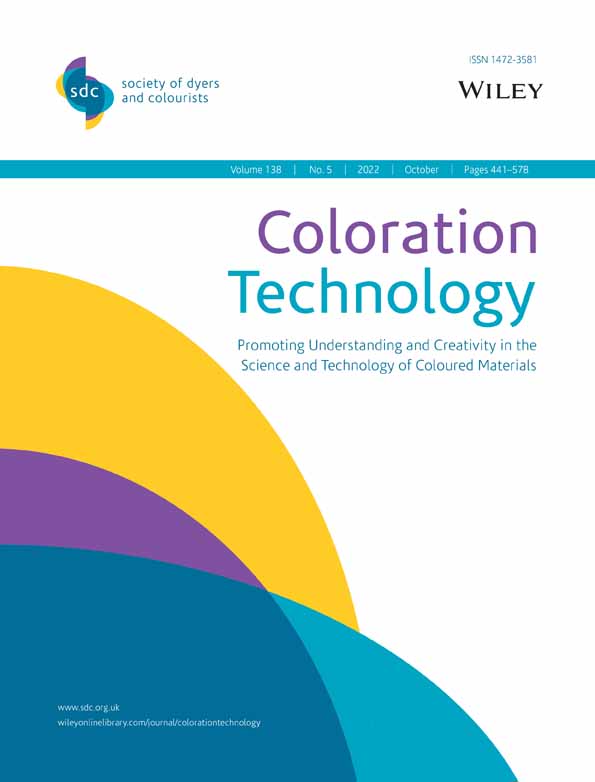A single-step pad-steam cationisation and dyeing process for improving dyeing properties of cotton fabrics
Funding information: China National Textile and Apparel Council Key Laboratory of Natural Dyes; Soochow University; China National Textile and Apparel Council; Zhejiang Sci-Tech University
Abstract
The cationic modification technology for cotton could greatly enhance colour strength and fixation of reactive dyes. However, it is a two-step method when cationic modification is applied to salt-free dyeing. Cotton fabric is initially treated with a cationic compound through exhaust or pad-cure, acid washing and drying process, then the cationic modified cotton is dyed with reactive dye. In this study, a single-step pad-steam cationisation and dyeing process was proposed to shorten the process and improve dye fixation. The fixation reaction between reactive dye and cotton fabrics was conducted at the temperature range 100–140°C and relative humidity range 40–90%. The effects of quaternary ammonium salt and inorganic salt as well as alkaline agent on K/S value and dye fixation were also studied. Furthermore, the drying kinetic of the wet cotton fabric was studied in this article. The result showed that the drying process fitted well to the Page model. The effective moisture diffusivity of wet cotton under different steaming conditions were calculated. An activation energy value of 32.25 kJ/mol was determined. Compared with the conventional process, a single-step pad-steam cationisation and dyeing process not only shortened the process but also increased K/S value and dye fixation.
CONFLICT OF INTEREST
The authors have no conflict of interest to declare.




